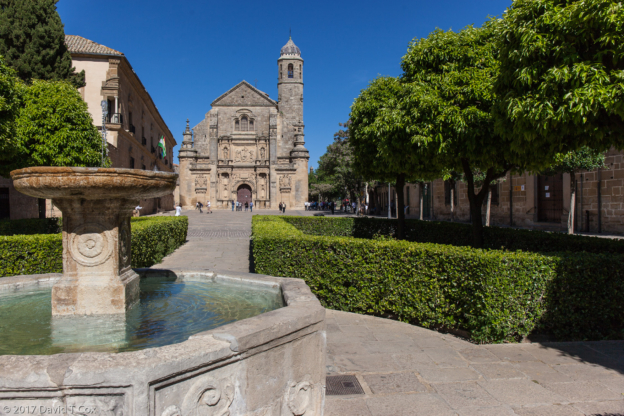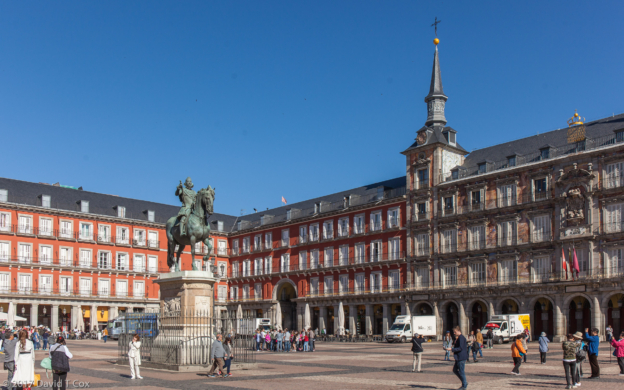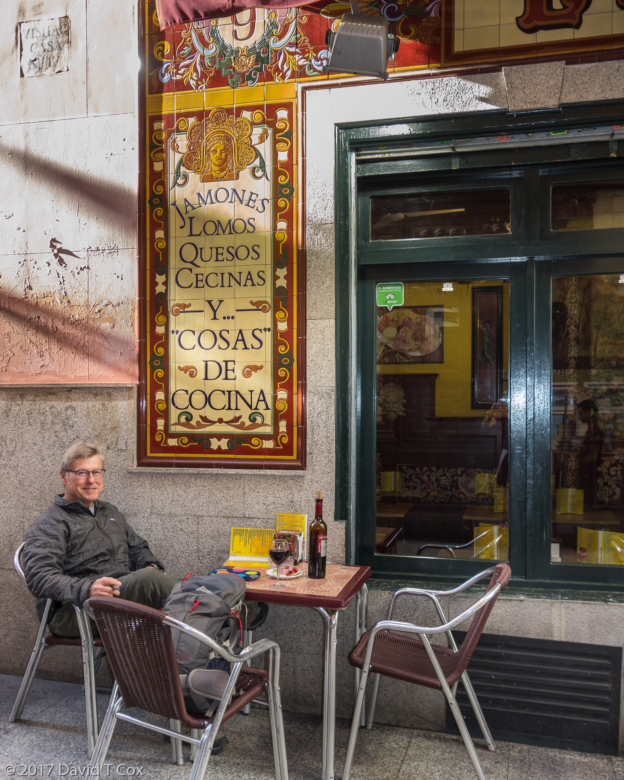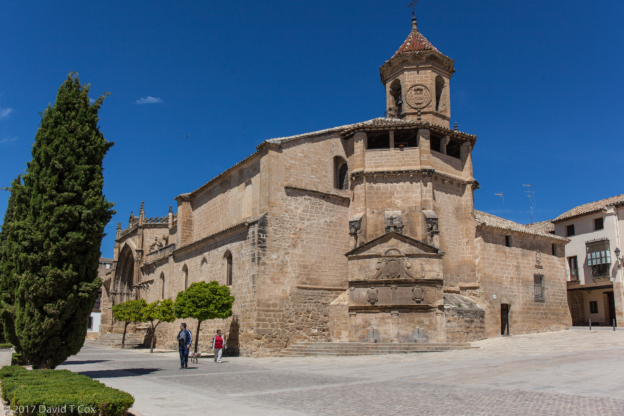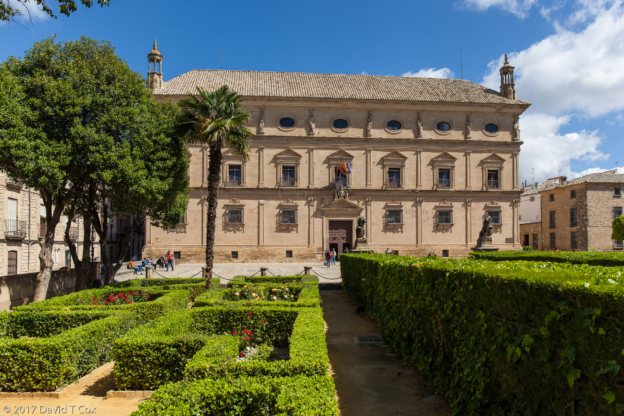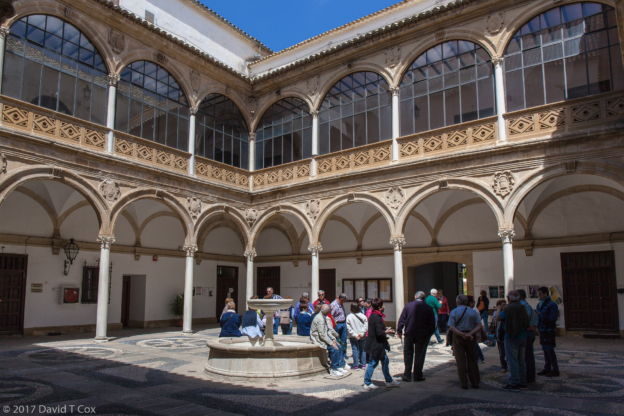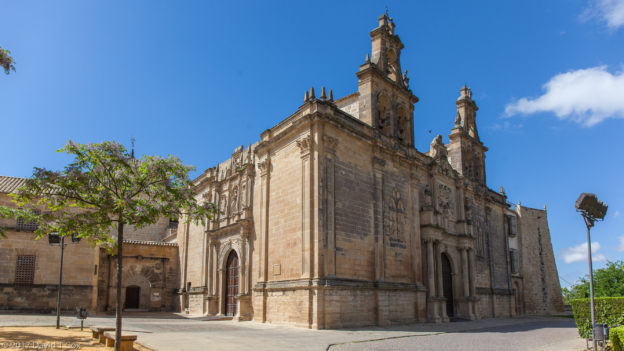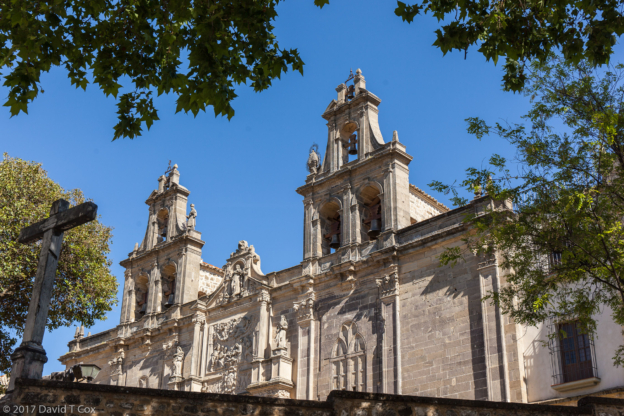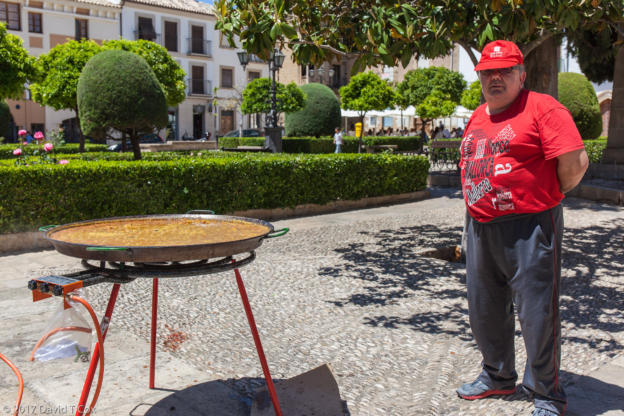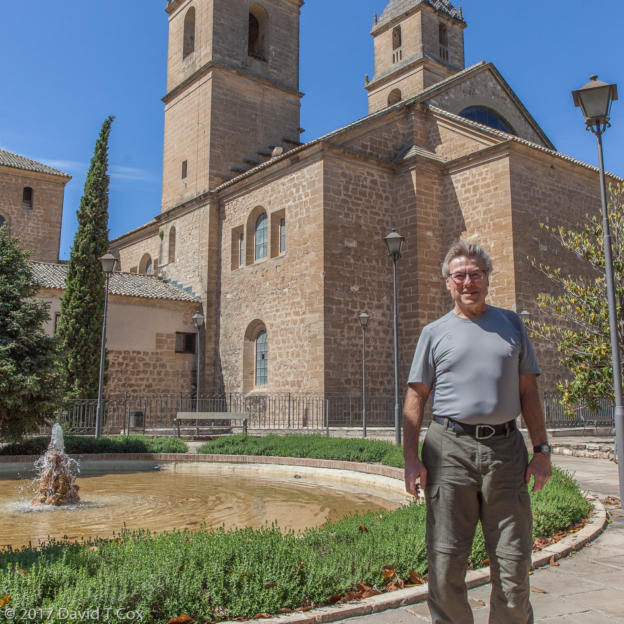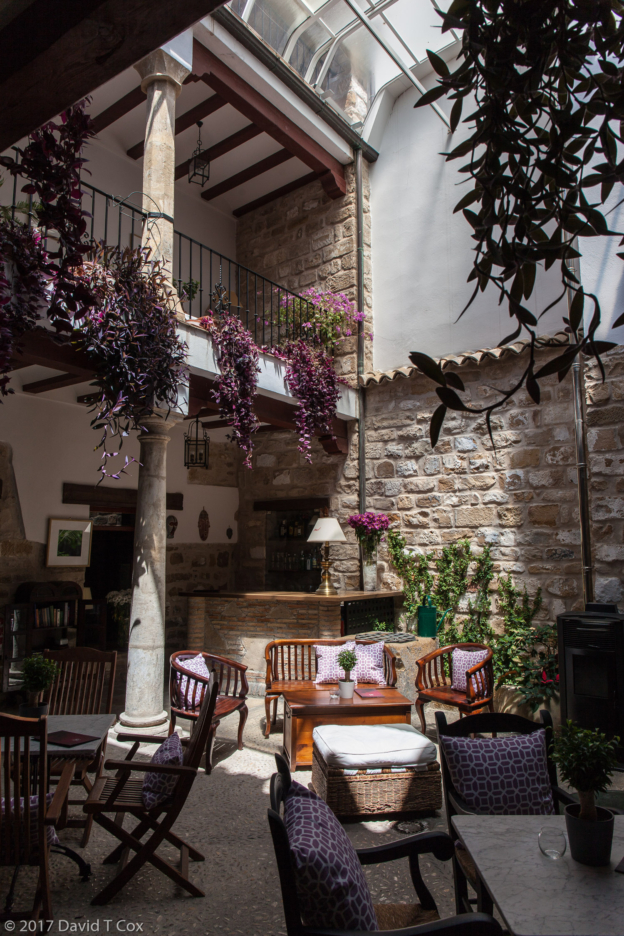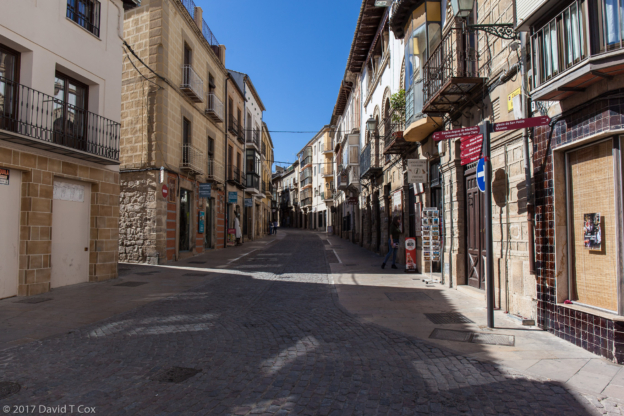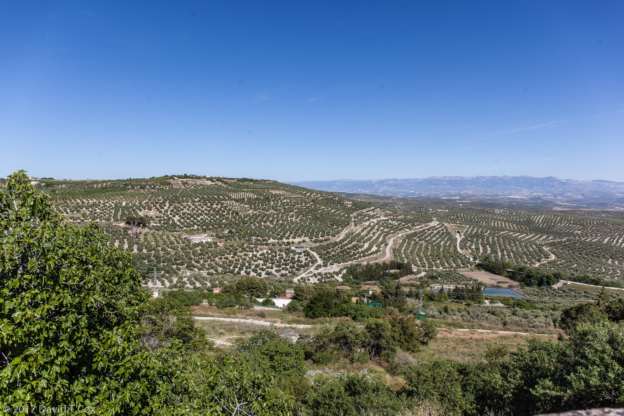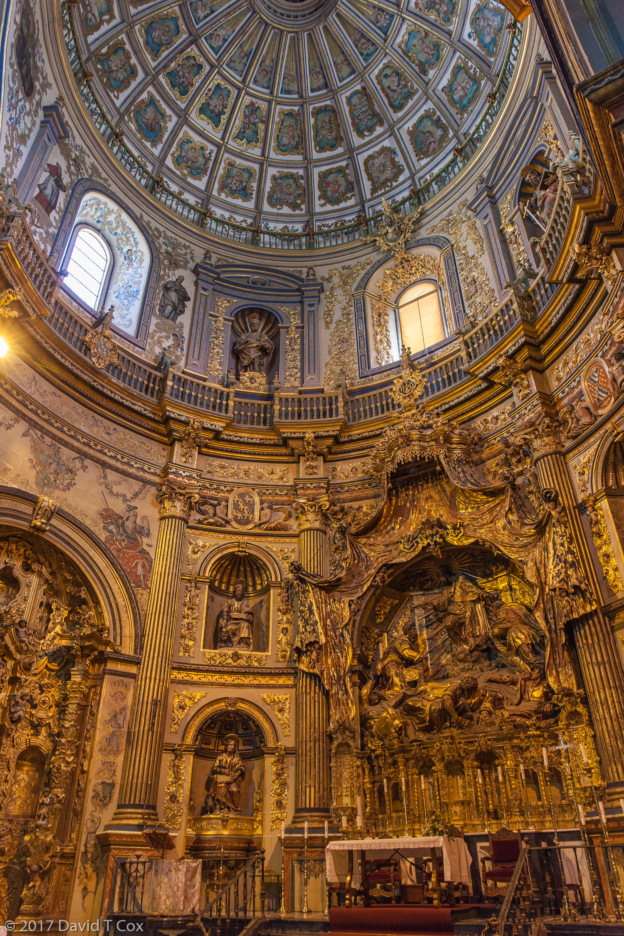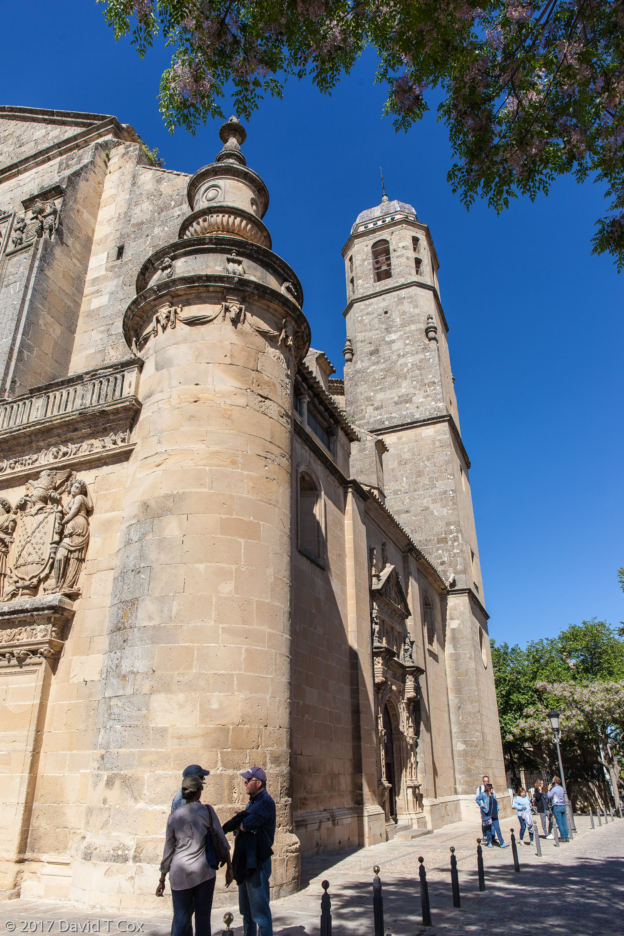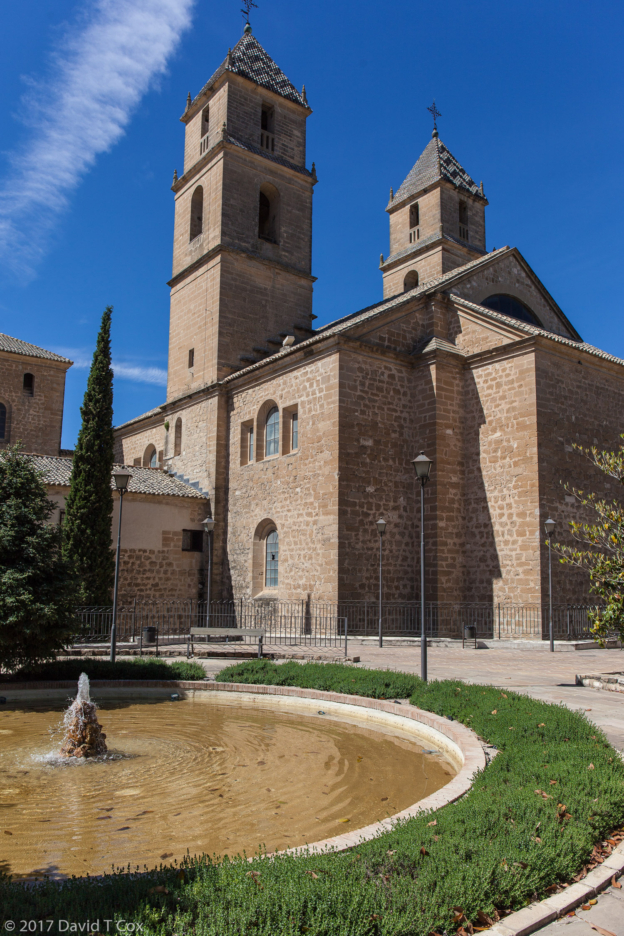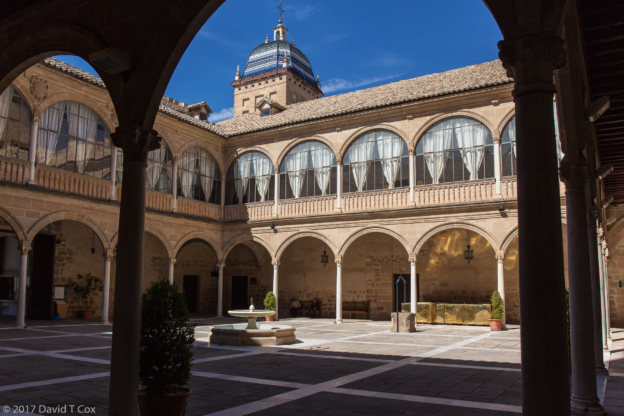All Photos Are Below the Travelogue Text
Click on Any Photo To Open Slide Show
To print the travelogue, right click anywhere on the page. Choose "Print" from your browser dialog box. You can choose Save to PDF in the browser print window.
Share your thoughts.
Email Dave - coxdavid55@hotmail.com
Leaving Tucson early Sunday morning April 30, I arrived in Madrid early Monday morning May 1 – total travel time about 19 hours but with a 9 hour time change. Jet-lag always hits me much harder when traveling east, and I really just recovered by Friday. This trip I tried a different hotel in Madrid, located just on the south side of the La Huerta district where I always spend much of my time.
As I’ve written before, La Huerta is the old central part of Madrid where Cervantes lived after writing Don Quixote, and where Hemingway spent many boozing hours in the late 1920s and late 1930s. La Huerta’s narrow streets and alleys, which run in every conceivable odd direction, opening here and there on small plazas, are lined with hundreds of tiny tabernas, cervecerias, jamonerias and chocolaterias, practically all of which have outside seating and provide wonderful tapas with wine or beer, or churros with the thick hot chocolate. I returned to several of my favorite haunts, including a terrific brewery on Plaza Santa Ana (named Naturbier – Hemingway spent so many hours at the cerveceria next door they had a specific table always reserved for him). Naturbier serves one of the best German beers I ever have tasted, along with the absolute best olives. I spent many an hour early evenings at Taberna Fragua de Vulcano, on the Northwest corner of the same Plaza, where the house wine costs 2 Euros, each glass freely accompanied by different generous tapas, including the most fabulous tuna salad mix with fresh red and green bell peppers, onions, tomatoes and more drenched in olive oil and vinegar.
I spent my several mornings in Madrid getting my phone sim card, checking transport to the south, and wandering the areas around the Plaza Mayor, Gran Via and Atocha. In checking transport by train I found that one must now pass through an airport type screening to board any train in Spain. Because no baggage is checked (all is carry-on), among things disallowed are knives. I had brought a favorite folding pocket knife I have used in the past to cut bulk ham and cheese which I regularly buy in Spain. Because I already have booked my last several days in Madrid (which time covers mid-June, the height of tourist season when the best value hotels are booked way in advance), I was able to drop off my knife at that hotel to be held for pickup when I return in 6 weeks. The owner recognized and remembered me from my last stay exactly 5 years ago – he seemed pleased to see me so I don’t think the long memory resulted from any past indiscretions.
On Thursday the 4th I headed by Metro to the South Bus Terminal and boarded the bus south to Ubeda. The highway passes through the arid region La Mancha, where ridges often are topped with groups of ancient, black-capped, white windmills. I could almost see Rozinante, lathered and snorting, galloping in the distance with Quixote astride, lance leveled and face intense under his inverted wash-basin.
Ubeda, together with Baeza just 6 miles away, lies in the small District of Jaen, the olive capital of the world. International merchants are descending on the Jaen District this coming week for its annual trade festival of olive oil, and so no hotel rooms are available now in Jaen. The several hundred thousand olive trees which cover the district (and much of Andalucia) all are producing copious amounts of pollen right now, and I had to purchase some expensive eye-drops from the local pharmacist to control the incredible itching and congestion.
I did not come to Ubeda for the olives – I came because the Old Towns of Ubeda and Baeza are World Heritage Sites, ancient walled cities with the best Spanish Renaissance architecture in the country. Several families from the two towns served as top scribes and courtiers to the Spanish Monarchy in the early to mid-16th century, becoming fabulously wealthy, and had palaces and churches built in the Italian Renaissance style. In particular, the Sacra Capilla del Salvador was constructed as a chapel-tomb for the Molina family, and its front and side facades, and almost the entire interior, are considered renaissance masterpieces, as also are the Hospital de Santiago and the Palacio de Molina. While here I am staying in a delightful boutique hotel in a 17th century building, the Alvaro de Torres, located on a small plaza of the same name in the Old Town. Pictures of all and more are below.
I ate several of my lunches at the Café Ibiut (learning there that “Ibiut” was the original pre-Roman Iberian name of Ubeda), where the 10 Euro daily set lunch includes multiple choices for a first and second platter, preceded by wine (or other drink) together with a tapa, and followed by a desert or coffee. Always more than I could eat. Yesterday I had fresh off-the-stove paella as the first dish, a huge portion of saffron rice cooked with mussels, chicken, fish, and artichoke hearts, followed by tender pork tenderloin and scalloped potatoes as the second dish. As I had inquired the day before about a large net full of small snails being delivered, saying how much I enjoyed them, the waitress brought me, as a free tapa with my wine, a large steaming bowl of escargots (about 35-40 small snails – dime size) in the tasty broth. These you learn to eat by popping the snail, shell and all together with a spoonful of the broth, into your mouth to suck all the broth; then with some dexterity of the tongue you usually can extract the snail either by further sucking or by grabbing its front-end with your teeth and pushing the shell away with your tongue. Where this fails, about a third of the time because the snail is too deep, you use a toothpick to extract the delicacy. In France and New York one may pay a fortune for escargots – in Portugal and Spain, in season (now through June), escargots are extremely inexpensive and absolutely wonderful.
Well, perhaps enough discussing the enjoyment of culinary and alcoholic delights, though those delights prove really a great way to live through jet-lag. Actually, those delights prove a great way to live. I will stay one more full day in Ubeda, as I have been taking my time visiting the various sites, and have a couple of museums left on my list. On Tuesday I travel to the sister town of Baeza for a couple of days to view the Renaissance architecture there. I could not book a room in Jaen due to the ongoing olive oil festival, so will travel then directly to one of my favorite cities – Cordoba – though I barely was able to book a room there as it is the final weekend of the terrific annual two-week Festival of Cordoba Patios, where all the ancient palatial homes in the Old City open to the public their “patios” showing off the myriad potted flowers which cover the patio walls. Later. Dave
- Plaza Mayor, Madrid, Spain
- Dave at Taberna Fragua de Vulcano on Plaza Santa Ana, Madrid, Spain
- street going north from Iglesia San Pedro, Plaza 1 de Mayo, Old City, Ubeda, Spain
- Iglesia de San Pablo, 1200-1600 Gothic and Renaissance, Ubeda, Spain
- Palacio de Vazquez de Molina aka Ayuntamiento,16th C Renaissance, Ubeda, Spain
- Palacio de Vazquez de Molina aka Ayuntamiento,16th C Renaissance, Ubeda, Spain
- Santa Maria de Los Reales Alcazares, 13th-14th C., Plaza Vazquez de Molina, Ubeda, Spain
- Santa Maria de Los Reales Alcazares, 13th-14th C., Plaza Vazquez de Molina, Ubeda, Spain
- cooking paella on Plaza del Ayuntamiento, Ubeda, Spain
- Dave before Hospital de Santiago, 16th C. Renaissance, Ubeda, Spain
- courtyard of Hotel Alvaro de Torres, 17th C, Ubeda, Spain
- Calle Real, Ubeda, Spain
- view from Mirador Santa Lucia, overlooking olive groves to east, Ubeda, Spain
- Sacra Capilla del Salvador, 16th C. Renaissance, Ubeda, Spain
- Sacra Capilla del Salvador, 16th C. Renaissance, Ubeda, Spain
- Sacra Capilla del Salvador, 16th C. Renaissance, Ubeda, Spain
- Sacra Capilla del Salvador, 16th C. Renaissance, Ubeda, Spain
- Hospital de Santiago, 16th C. Renaissance, Ubeda, Spain
- Hospital de Santiago, 16th C. Renaissance, Ubeda, Spain
To print the travelogue, right click anywhere on the page. Choose "Print" from your browser dialog box. You can choose Save to PDF in the browser print window.
Share your thoughts.
Email Dave - coxdavid55@hotmail.com
